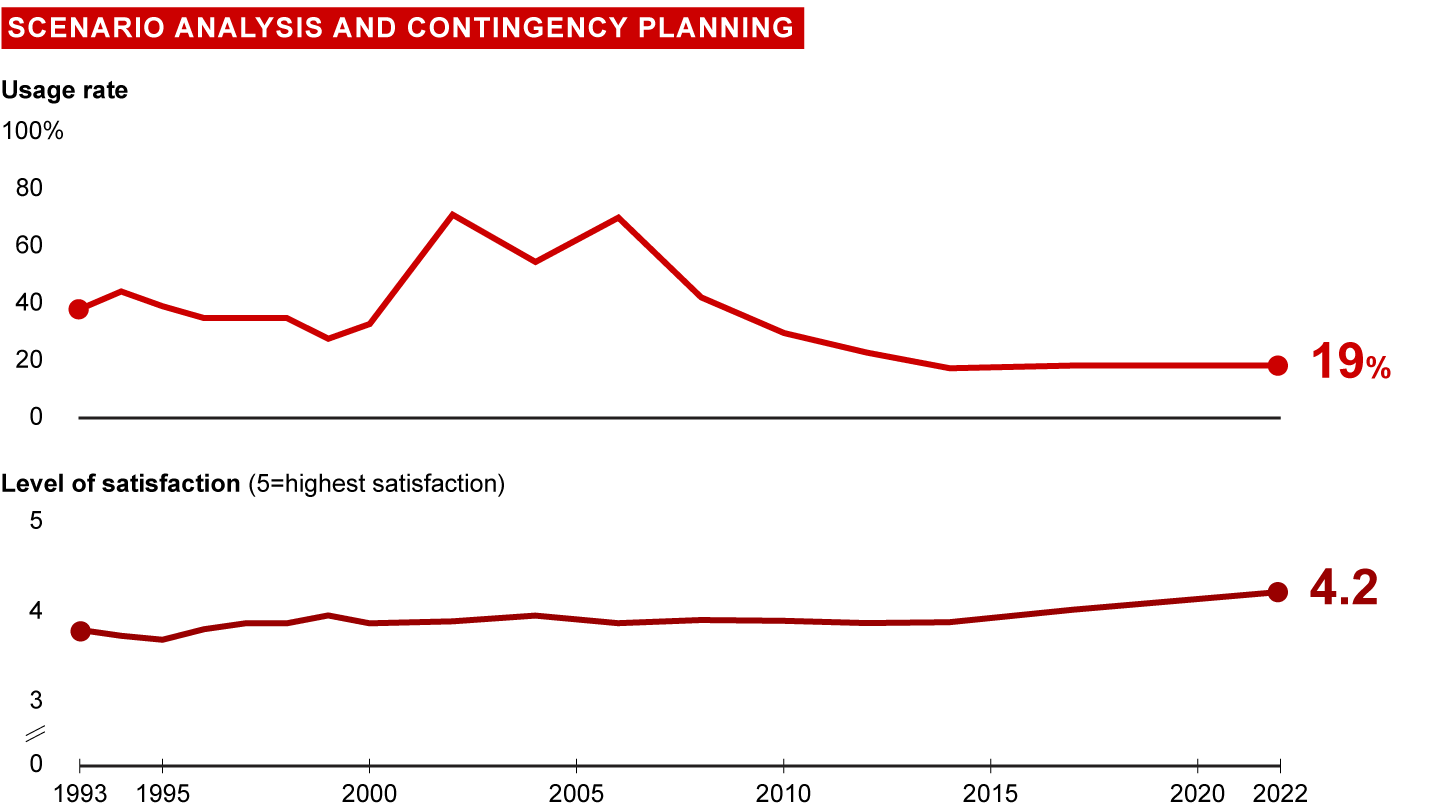Management Tools
What Is Scenario Analysis and Contingency Planning?
Scenario Analysis and Contingency Planning is a process that allows executives to explore and prepare for several alternative futures. It examines the outcomes a company might expect under a variety of operating strategies and economic conditions. Contingency planning assesses what effect sudden market changes or business disruptions might have on a company and devises strategies to deal with them. Scenario analysis and contingency plans avoid the dangers of simplistic, one-dimensional, or linear thinking.


By raising and testing various “what if” scenarios, managers can brainstorm together and challenge their assumptions in a nonthreatening, hypothetical environment before they decide on a certain course of action. Scenario Analysis and Contingency Planning allows management to pressure-test plans and forecasts and equips the company to handle the unexpected.
How Is Scenario Analysis and Contingency Planning Implemented?
Key steps in a Scenario Analysis and Contingency Planning process are:
- Delineating critical market and competitive uncertainties potentially impacting the business
- Defining extreme, but plausible, scenarios
- Testing the impact of each scenario on future business performance
- Identifying no-regret moves that are valuable under most or all scenarios
- Determining big bets, tied to the scenario in which leadership has the most conviction, surfacing strategic hedges and options
- Designating trigger points and signposts to highlight changes
- Establishing regular forums to monitor signposts and decide corrective actions
- Developing contingency plans tied to significant changes in signposts
- Being prepared to change course if necessary
Related Topics
What Are the Common Uses of Scenario Analysis and Contingency Planning?
By using Scenario Analysis and Contingency Planning, a company can:
- Challenge widely held beliefs and assumptions about the business and its strategic direction
- Surface critical factors that can influence the company’s future course
- Make long-range planning more dynamic and consequential
- Develop a clearer view of the future
- Achieve a higher degree of organizational learning

Management Tools & Trends 2023
On the 30th anniversary of our survey, managers seem surprisingly upbeat.